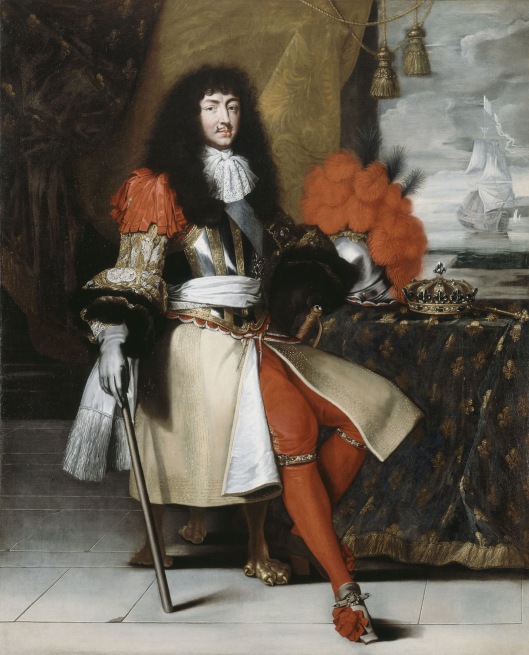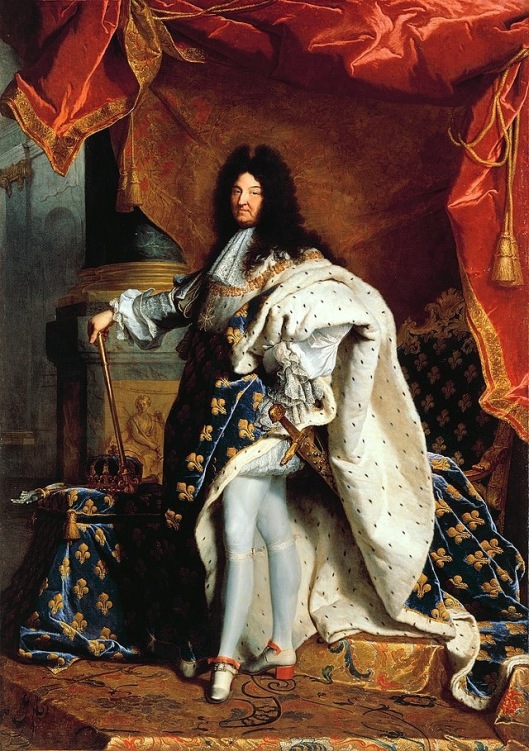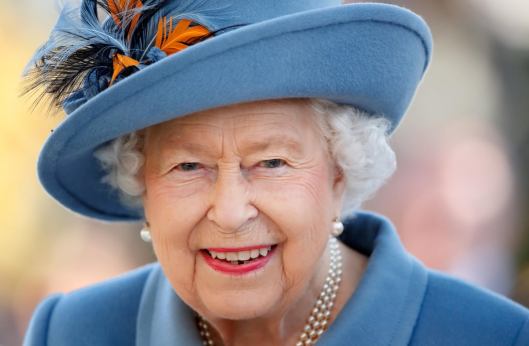Tags
Absolute Monarchy, Death, Gangrene, King Louis XV of France and Navarre, Longest reign, Louis XIII, Louis XV, Maria Theresa of Spain
Louis XIV (Louis Dieudonné; September 5, 1638 – September 1, 1715), also known as Louis the Great (Louis le Grand) or the Sun King (le Roi Soleil), was King of France from May 14, 1643 until his death in 1715. His reign of 72 years and 110 days is the longest recorded of any monarch of a sovereign country in history. Louis XIV’s France was emblematic of the age of absolutism in Europe. The King surrounded himself with a variety of significant political, military, and cultural figures.
Louis XIV was born in the Château de Saint-Germain-en-Laye, to Louis XIII and Anne of Austria, the eldest daughter of King Felipe III of Spain and his wife Archduchess Margaret of Austria. Anne held the titles of Infanta of Spain and of Portugal (since her father was King of Portugal as well as Spain) and Archduchess of Austria. Despite her Spanish birth, she was referred to as Anne of Austria because the rulers of Spain belonged to the senior branch of the House of Austria, known later as the House of Habsburg, a designation relatively uncommon before the 19th century.

He was named Louis Dieudonné (Louis the God-given) and bore the traditional title of French heirs apparent: Dauphin. At the time of his birth, his parents had been married for 23 years. His mother had experienced four stillbirths between 1619 and 1631. Leading contemporaries thus regarded him as a divine gift and his birth a miracle of God.
Sensing imminent death, Louis XIII decided to put his affairs in order in the spring of 1643, when Louis XIV was four years old. In defiance of custom, which would have made Queen Anne the sole Regent of France, the king decreed that a regency council would rule on his son’s behalf. His lack of faith in Queen Anne’s political abilities was his primary rationale. He did, however, make the concession of appointing her head of the council.
Louis’ relationship with his mother was uncommonly affectionate for the time. Contemporaries and eyewitnesses claimed that the Queen would spend all her time with Louis. Both were greatly interested in food and theatre, and it is highly likely that Louis developed these interests through his close relationship with his mother. This long-lasting and loving relationship can be evidenced by excerpts in Louis’ journal entries, such as:
“Nature was responsible for the first knots which tied me to my mother. But attachments formed later by shared qualities of the spirit are far more difficult to break than those formed merely by blood.”
It was his mother who gave Louis his belief in the absolute and divine power of his monarchical rule.
Louis began his personal rule of France in 1661, after the death of his chief minister, the Cardinal Mazarin. An adherent of the concept of the divine right of kings, Louis continued his predecessors’ work of creating a centralised state governed from the capital. He sought to eliminate the remnants of feudalism persisting in parts of France and, by compelling many members of the nobility to inhabit his lavish Palace of Versailles, succeeded in pacifying the aristocracy, many members of which had participated in the Fronde rebellion during his minority.
By these means he became one of the most powerful French monarchs and consolidated a system of absolute monarchy in France that endured until the French Revolution. He also enforced uniformity of religion under the Gallican Catholic Church. His revocation of the Edict of Nantes abolished the rights of the Huguenot Protestant minority and subjected them to a wave of dragonnades, effectively forcing Huguenots to emigrate or convert, and virtually destroying the French Protestant community.
During Louis’ long reign, France emerged as the leading European power and regularly asserted its military strength. A conflict with Spain marked his entire childhood, while during his reign, the kingdom took part in three major continental conflicts, each against powerful foreign alliances: the Franco-Dutch War, the War of the League of Augsburg, and the War of the Spanish Succession. In addition, France also contested shorter wars, such as the War of Devolution and the War of the Reunions.
Warfare defined Louis’s foreign policy and his personality shaped his approach. Impelled by “a mix of commerce, revenge, and pique”, he sensed that war was the ideal way to enhance his glory. In peacetime he concentrated on preparing for the next war. He taught his diplomats that their job was to create tactical and strategic advantages for the French military.
Significant achievements during his reign which would go on to have a wide influence on the Early Modern Era well into the Industrial Revolution and up to today, include the construction of the canal du midi, the creation of the Palace and Gardens of Versailles, the sponsorship and patronage of such artists and composers as Jean-Baptiste de Lully, Molière, and Hyacinthe Rigaud, as well as the founding of the French Academy of Sciences, among others.
In 1660 marriage to King Louis XIV, and his double first cousin, Maria Theresa of Spain was made with the purpose of ending the lengthy war between France and Spain. Famed for her virtue and piety, she saw five of her six children die in early childhood, and is frequently viewed as an object of pity in historical accounts of her husband’s reign, since she was often neglected by the court.
Maria Theresa of Spain (September 10, 1638 – July 30, 1683), was by birth an Infanta of Spain and Portugal (until 1640) and Archduchess of Austria as member of the Spanish branch of the House of Habsburg and by marriage Queen of France and Navarre.
Maria Theresa was the daughter of Felipe IV and his wife Elisabeth of France, who died when Maria Theresa was six years old. Elisabeth of France was the eldest daughter of King Henri IV of France and his second spouse Marie de’ Medici (grandparents of King Louis XIV).
Louis XIV and his wife Maria Theresa of Spain had six children from their marriage. However, only one child, the eldest, survived to adulthood: Louis, le Grand Dauphin, known as Monseigneur. Maria Theresa died in 1683, whereupon Louis remarked that she had never caused him unease on any other occasion.
Despite evidence of affection early on in their marriage, Louis was never faithful to Maria Theresa. He took a series of mistresses, both official and unofficial. Among the better documented are Louise de La Vallière (with whom he had five children; 1661–67), Bonne de Pons d’Heudicourt (1665), Catherine Charlotte de Gramont (1665), Françoise-Athénaïs, Marquise de Montespan (with whom he had seven children; 1667–80), Anne de Rohan-Chabot (1669–75), Claude de Vin des Œillets (one child born in 1676), Isabelle de Ludres (1675–78), and Marie Angélique de Scorailles (1679–81), who died at age 19 in childbirth.
Through these liaisons, he produced numerous illegitimate children, most of whom he married to members of cadet branches of the royal family.
Louis proved relatively more faithful to his second wife, Françoise d’Aubigné, Marquise de Maintenon. He first met her through her work caring for his children by Madame de Montespan, noting the care she gave to his favorite, Louis Auguste, Duke of Maine. The king was, at first, put off by her strict religious practice, but he warmed to her through her care for his children.
When he legitimized his children by Madame de Montespan on December 20, 1673, Françoise d’Aubigné became the royal governess at Saint-Germain. As governess, she was one of very few people permitted to speak to him as an equal, without limits. It is believed that they were married secretly at Versailles on or around 10 October 1683 or January 1684. This marriage, though never announced or publicly discussed, was an open secret and lasted until his death.
Death of King Louis XIV
Louis XIV’s health started to decline on August 10, 1715 after his return from a hunting trip in Marly, when he felt sharp pains in his leg. He wa diagnosed sciatica by his physician, Fagon. Shortly afterwards with no relief from the pain black marks appeared, indicating his legs had developed gangrene. Although Louis was in certain excruciating pain, he continued with his daily routine without complaining and fully intending to do his duties.
On August 25, the Feast Day of Saint Louis IX, the King was compelled to remain in bed, due to his worsening symptoms. As the gangrene continued to worsen it was discovered on the next day that it had spread to his bones. The doctors were powerless and could do nothing to help him. That same day the king received his five-year-old great-grandson, the future Louis XV, to give him advice. He told his heir to lighten the burden on the people and avoid going to war and to remain “a peaceful prince.”
After a week of excruciating pain, Louis XIV died in Versailles just after 8.15 am on September 1st. Louis died just four days shy of his 77th birthday. He had been king for 72 years, which was the longest reign in the history of France and Europe.


